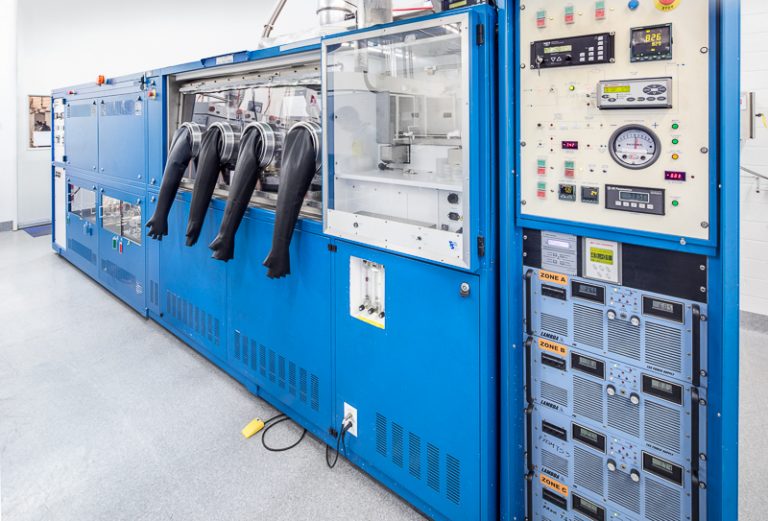
BluGlass Demonstrates Working Tunnel Junction Laser Diodes
Semiconductor manufacturing technology and devices manufacturer BluGlass has successfully demonstrated tunnel junction laser diodes, using its proprietary remote plasma chemical vapor deposition (RPCVD) technology. The proof-of-concept is a “world first,” the company said in a press release.
BluGlass' RPCVD tunnel junction technology is designed for use in high-power products including laser diodes and high-brightness LEDs.
The proof-of-concept dual n-wave diodes are designed to enable higher-power and more efficient lasers for use in commercial applications such as 3D printing and industrial welding. The diodes have demonstrated good lasing behavior, the company said, and the milestone helps confirm the potential of the RPCVD laser diode designs to address the performance requirements for high-value GaN laser diode applications.

BluGlass Ltd. demonstrated working tunnel junction laser diodes in a world-first proof-of-concept using its proprietary remote plasma chemical vapor deposition (RPCVD) technology. Courtesy of BluGlass.
GaN laser diode applications currently used in industry are limited by optical and resistive loss in the magnesium-containing layers — the p-type layers —which leads to low conversion efficiencies. Those efficiencies are typically in the 40% to 45% range, compared to the nearly 90% in GaN-based LEDs. Almost half the power consumed when operating GaN laser diodes is lost in the form of heat due to the highly resistive p-type layers, traditionally needed to create the electrical circuit in a laser diode.
BluGlass’ approach is enabled by the unique benefits of low-temperature, low-hydrogen RPCVD growth; it can eliminate the need for the highly resistive and performance-losing p-type layers. RPCVD-enabled designs replace the p-type cladding layer with an RPCVD tunnel junction and second n-type cladding layer — called a dual n-wave laser diode, which may pave the way to significantly improve laser diode performance in the future.
“While these novel lasers have significant development required before the launch of future RPCVD-enhanced products, our significantly further advanced standard (MOCVD) laser diode product development continues to focus on solving reliability and improving our downstream production ahead of launching commercial products to waiting customers,” James Walker, BluGlass executive chair, said.
/Buyers_Guide/BluGlass_Ltd/c31336